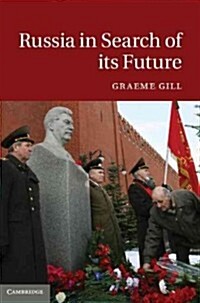
단행본
Symbolism and regime change in Russia
- 개인저자
- Gill, Graeme J
- 발행사항
- New York ; Cambridge, UK : Cambridge University Press 2013
- 형태사항
- vii, 246 p. ; 24 cm
- ISBN
- 9781107031395 (hbk.)
- 청구기호
- 340.929 G475s
- 서지주기
- Includes bibliographical references(p. 231-242) and index
소장정보
| 위치 | 등록번호 | 청구기호 / 출력 | 상태 | 반납예정일 |
|---|---|---|---|---|
이용 가능 (1) | ||||
| 1자료실 | 00015875 | 대출가능 | - | |
이용 가능 (1)
- 등록번호
- 00015875
- 상태/반납예정일
- 대출가능
- -
- 위치/청구기호(출력)
- 1자료실
책 소개
During the Soviet period, political symbolism developed into a coherent narrative that underpinned Soviet political development. Following the collapse of the Soviet regime and its widespread rejection by the Russian people, a new form of narrative was needed, one which both explained the state of existing society and gave a sense of its direction. By examining the imagery contained in presidential addresses, the political system, the public sphere and the urban development of Moscow, Graeme Gill shows how no single coherent symbolic programme has emerged to replace that of the Soviet period. Laying particular emphasis on the Soviet legacy, and especially on the figure of Stalin, Symbolism and Regime Change in Russia explains why it has been so difficult to generate a new set of symbols which could constitute a coherent narrative for the new Russia.
Asks why regime change in Russia has not been accompanied by a coherent new political symbolism.
Asks why regime change in Russia has not been accompanied by a coherent new political symbolism.
목차
1. Symbolism and regime change; 2. Dissolution of the Soviet metanarrative; 3. The leader's vision; 4. The symbolism of the political arena; 5. Russian identity in the public arena; 6. Moscow: a material basis for post-Soviet identity?; Conclusion: the difficulties of a post-Soviet narrative.
